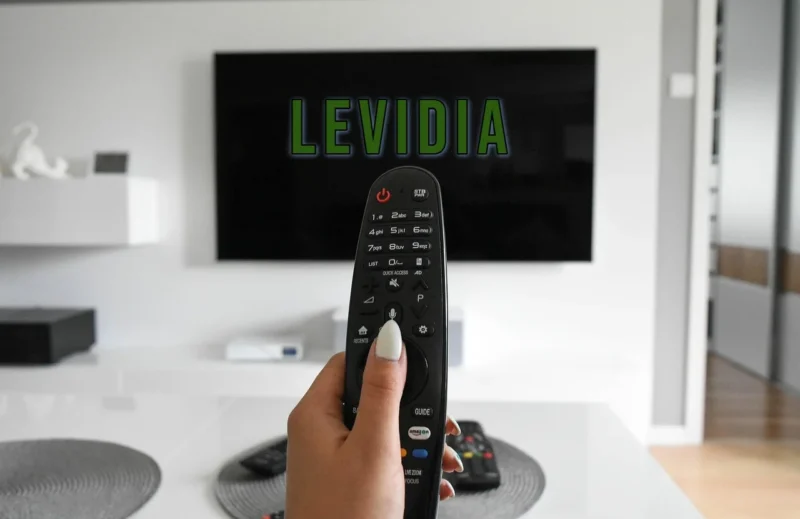Levidia’s Place In Streaming Culture
At the heart of this discussion lies Levidia as a streaming source that many viewers reference when discussing free access to movies and series. From user forums to reviews, levidia appears repeatedly in debates about quality, availability, and risks. In this piece, I examine how such platforms influence media habits, what they offer, what pitfalls they present, and what legal or ethical issues accompany their use.
New Media Trends In Viewing
Emerging technologies continue to reshape how audiences access cinema and television. Apps, smart TVs, streaming sticks, and hardware optimization push content delivery closer to real time. As competition heats up, services try to offer unique hooks: niche catalogs, regionally tailored libraries, or interactive options. Users demand a fluid experience without buffering, and platforms that adapt to these demands tend to gain traction.
Alternative Approaches To Licensing
Many platforms work with studios and rights holders to license content legally. That model drives sustainable growth, though it raises costs. Others adopt models of partial exclusivity, ad-driven access, or bundling local channels. As premium services saturate markets, hybrid approaches may become more common, blending free tiers with paid upgrades.
Interface Design And Ease Of Use
A streaming service’s success often hinges on how intuitive its interface feels. Clean search, thumbnails, smart suggestions, fast load times, and consistent design across devices matter strongly. A responsive layout, minimal friction in navigation, and readily available help features bring users back. Poor UX drives abandonment quickly in a crowded landscape.
Content Depth And Curation Strategies
One measure of value is how many titles and how much diversity a service offers. Curated sections, classics, foreign, indie, cult, create exploration paths. Frequent refresh of the catalog helps prevent stagnation. Algorithms that reflect viewer tastes yet promote discovery avoid echo chambers. The depth of a library can sometimes outweigh the breadth in retaining engagement.
Device Compatibility And Cross Platform Flow
Viewers expect seamless transitions: start a movie on a phone, pick up on a tablet or smart TV. If a platform fails at syncing or continuity, frustration follows. Compatibility with older devices extends reach. Support for cast, AirPlay, or DLNA features helps integrate platforms into everyday home systems. Strong platforms ensure the viewing journey is device-agnostic.
Risks Around Free Streaming Services
Free or semi-free services often carry risks: poor quality, broken links, malware, unstable availability, or legal exposure. Users sometimes encounter nonfunctional streams or abrupt shutdowns. For instance, some users report that the Brave browser stopped streaming videos from Levidia at times, citing playback failures or 404 errors. That instability undercuts trust.
Always weigh the allure of “free” versus consistency, safety, and reliability.
Legal And Ethical Considerations
Many platforms that disperse copyrighted content without proper rights face legal challenges. Users might inadvertently engage in copyright violations by using them. Ethical viewers and creators raise questions about compensating content producers. Over time, regulation, takedown processes, or ISP blocking often arise as responses to unlicensed services.
Quality Assurance And Standards
Video and audio quality vary widely across platforms. High definition, adaptive bitrate streaming, subtitle options, and lossless audio matter. Users reject platforms that deliver pixelated or lagging video. Maintaining quality control over streams, metadata, and encoding is a key task behind the scenes, yet they shape perception.
Monetization And Business Models
How streaming platforms sustain themselves differs: subscription fees, ad revenue, freemium tiers, pay-per-view, or hybrid combinations. A service aiming at mass users may depend on ad support, but that introduces hassles like buffer breaks. Others adopt premium plans that remove ads or allow higher resolution. The balance between access and revenue defines longevity.
Growth Through Social And Community Features
Some platforms integrate social elements: shared watching, comments, ratings, and curated lists among friends. These features encourage users to engage more deeply and help retention. Building a community around taste can drive word-of-mouth growth. Platforms that hide behind impersonal catalogs may lack stickiness.
Future Directions And Speculations
Advances like VR viewing, real-time collaboration, AI-based content generation, or interactive narratives might reshape what “streaming” means. Platforms might blend live events, user-driven stories, or augmented reality overlays. As adoption of high bandwidth (5G, fiber) increases, expectations for instant, cinematic streaming rise.
In that evolving world, platforms need strong core principles: reliability, fairness, quality, and transparency.
Advice For Consumers Navigating Services
Pick services with clear terms, stable performance, and a good reputation. Use secure devices, antivirus tools, and avoid suspicious links. Prefer licensed services when possible. Test available trials, examine catalog relevance, and check whether multi-device support or offline options exist. Be cautious when giving credentials to lesser-known platforms.
If a service repeatedly fails to stream or shows frequent downtime, it may not be worth the risk.
Reflection On The “Levidia Effect”
The attention around Levidia underscores demand gaps in mainstream streaming: viewers want large catalogs, minimal restrictions, seamless access. The popularity of such platforms perhaps signals dissatisfaction with fragmentation, content regionalization, or high subscription costs. Whether users switch to licensed alternatives or continue chasing nominally free services depends on how well mainstream services meet those demands.

